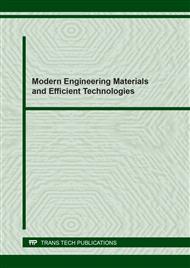p.166
p.172
p.179
p.190
p.197
p.203
p.211
p.222
p.232
Effect of Linear Crack Size and Location Relationship to Piston Stress and Damage Tolerance
Abstract:
In the quantitative characterization of linear defect structure of Piston Alloy, non-destructive testing and micro-morphology of defect, shape and outline of prefabricated linear defect are used in this paper. Based on ANSYS finite element software, an experimental simulation of line defect was carried out by using the finite element software of micromechanics. The defects of piston alloy components are assigned with material parameters, the model grid is divided, the boundary condition is defined and the finite element simulation is carried out under ANSYS/Mechanical environment. The calculation of the micro-stress field of the interface with various defects is obtained. Under the service condition of high-power density diesel engine, the local stress concentration caused by line defect is less than the strength limit of alloy material. Therefore, in this location eddy current testing non-destructive testing control line defect size is 0.12 mm×0.2 mm×5 mm. It is suitable for Eddy current nondestructive testing of piston components and can ensure the material safety and work reliability of Piston components under service condition.
Info:
Periodical:
Pages:
197-202
Citation:
Online since:
May 2022
Authors:
Price:
Сopyright:
© 2022 Trans Tech Publications Ltd. All Rights Reserved
Share:
Citation:



